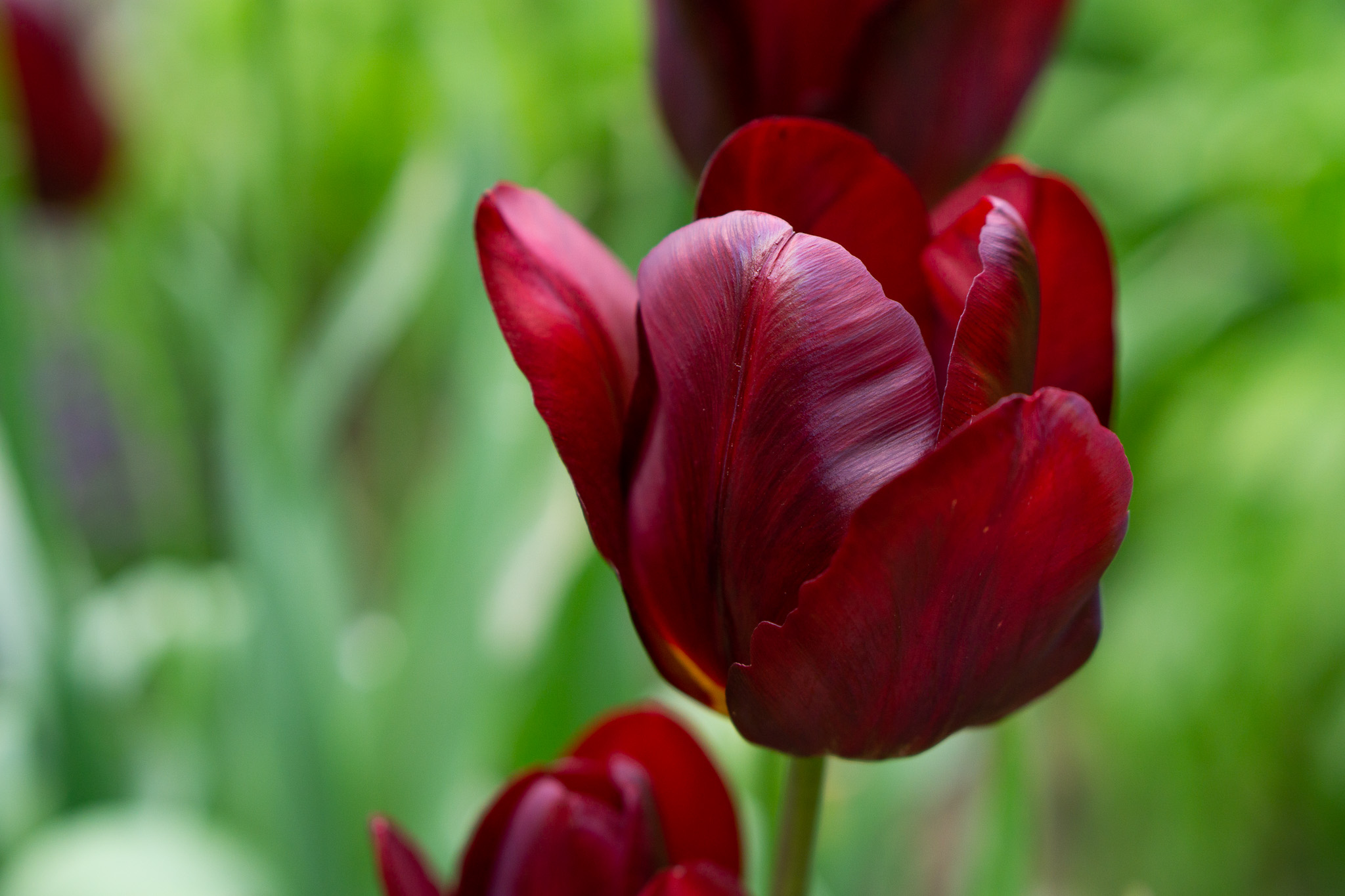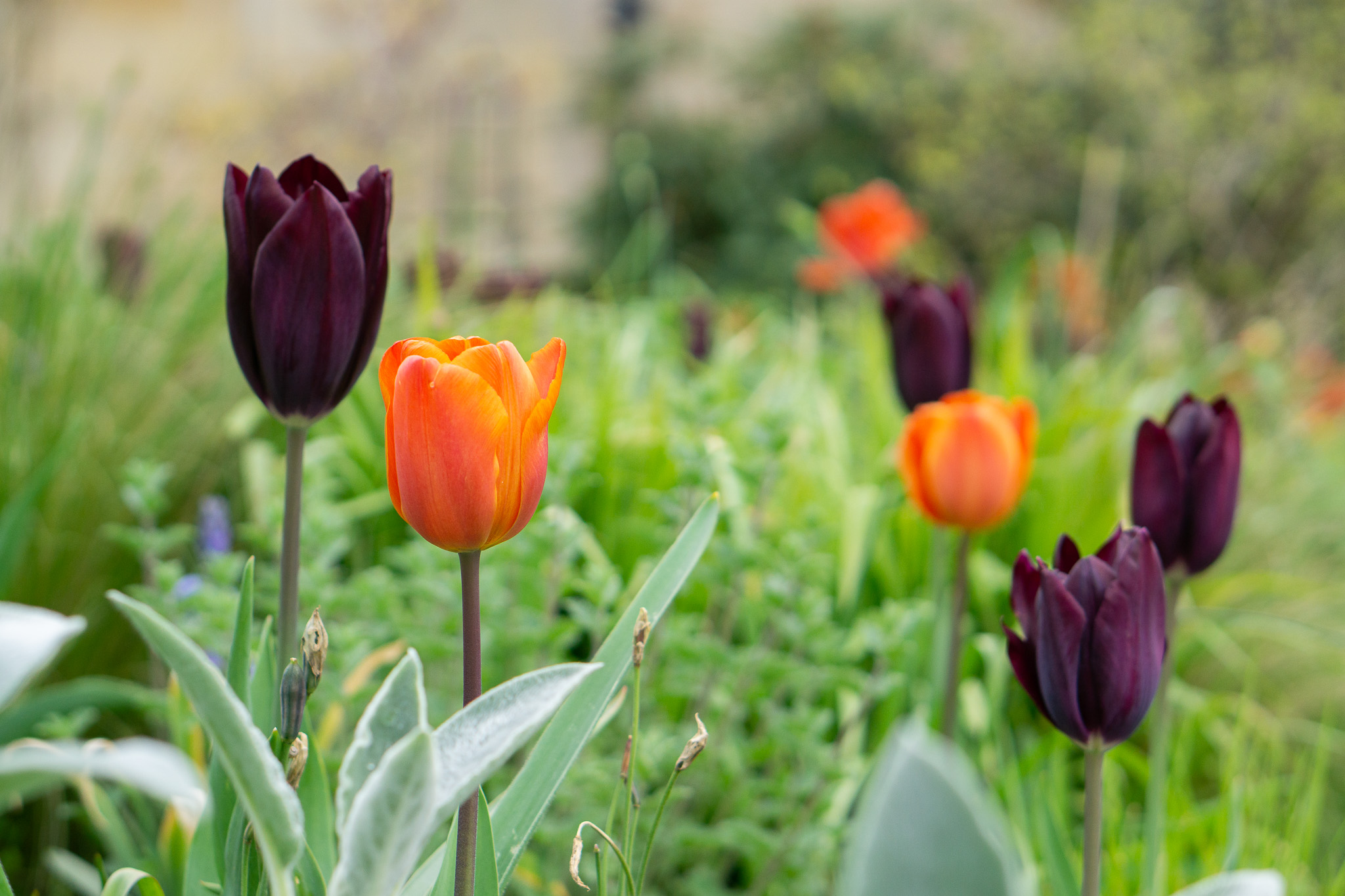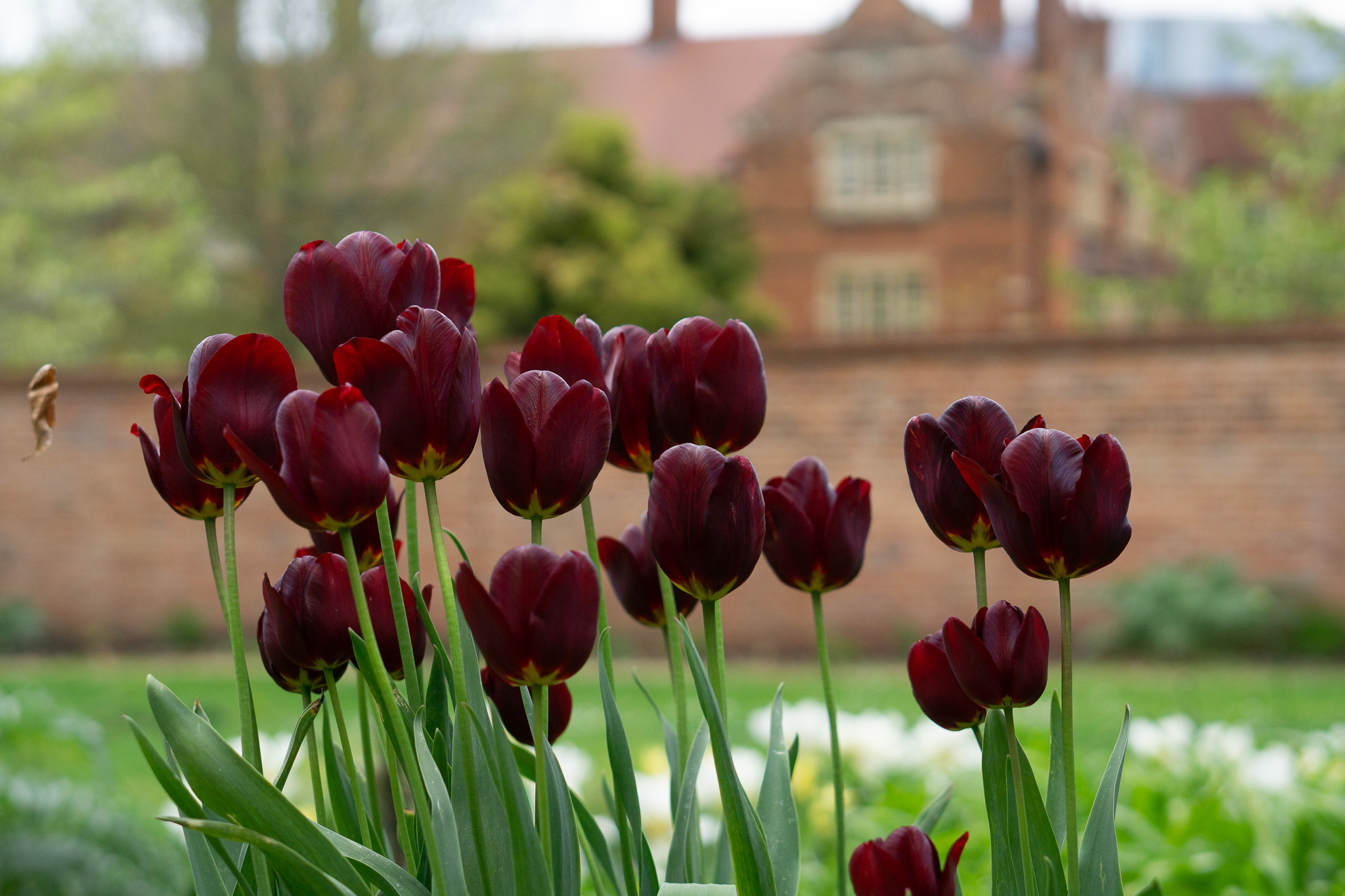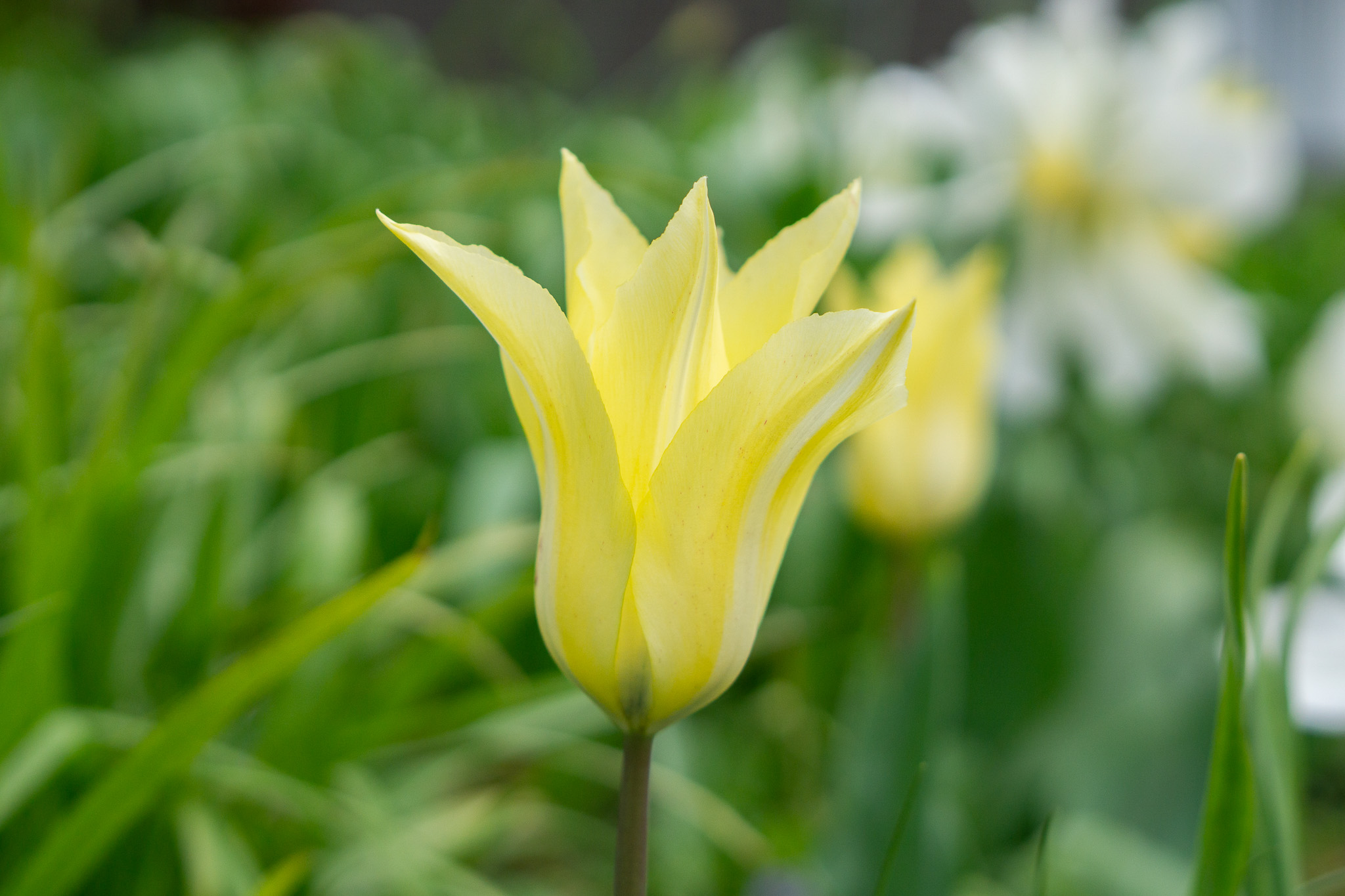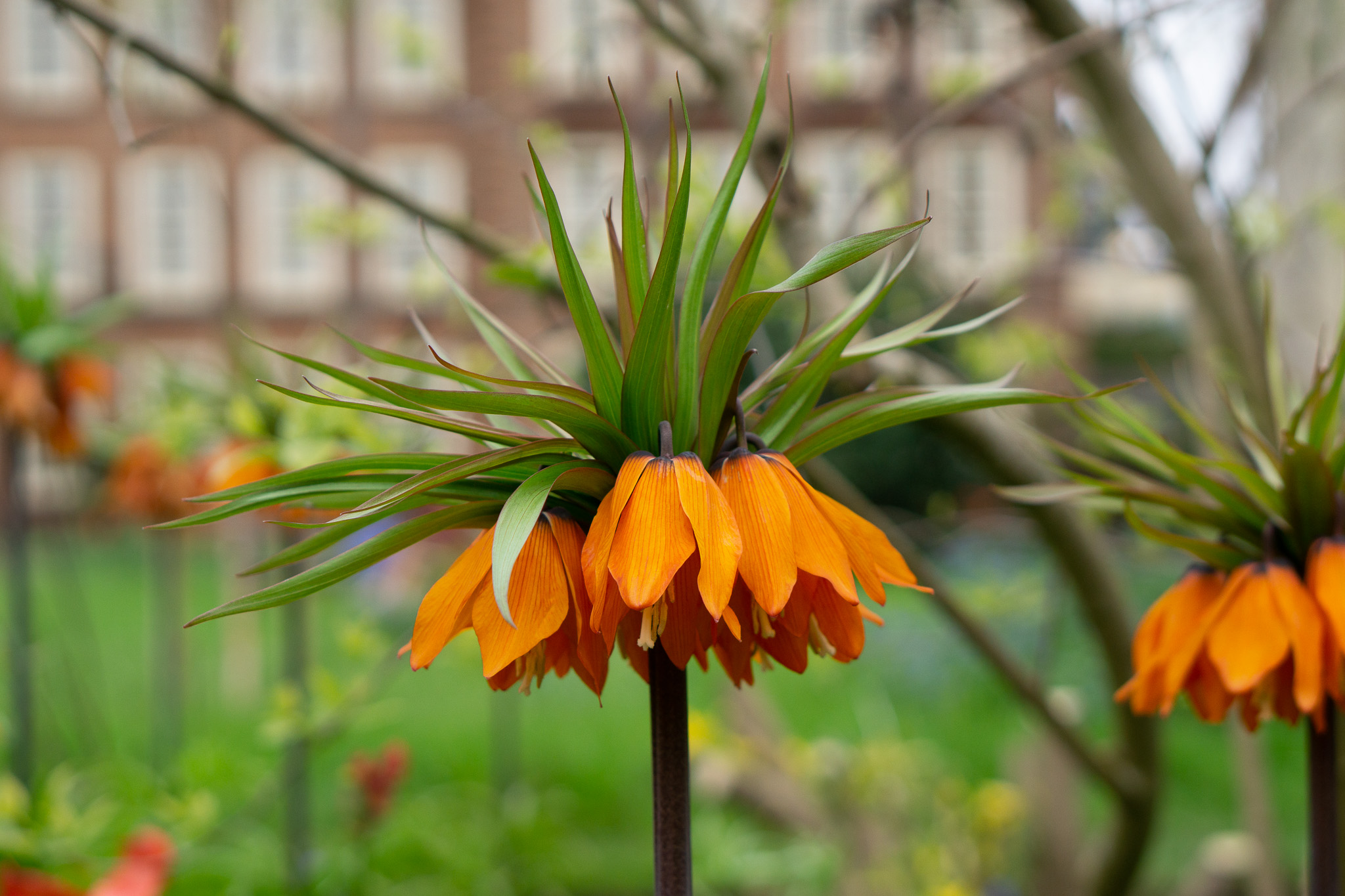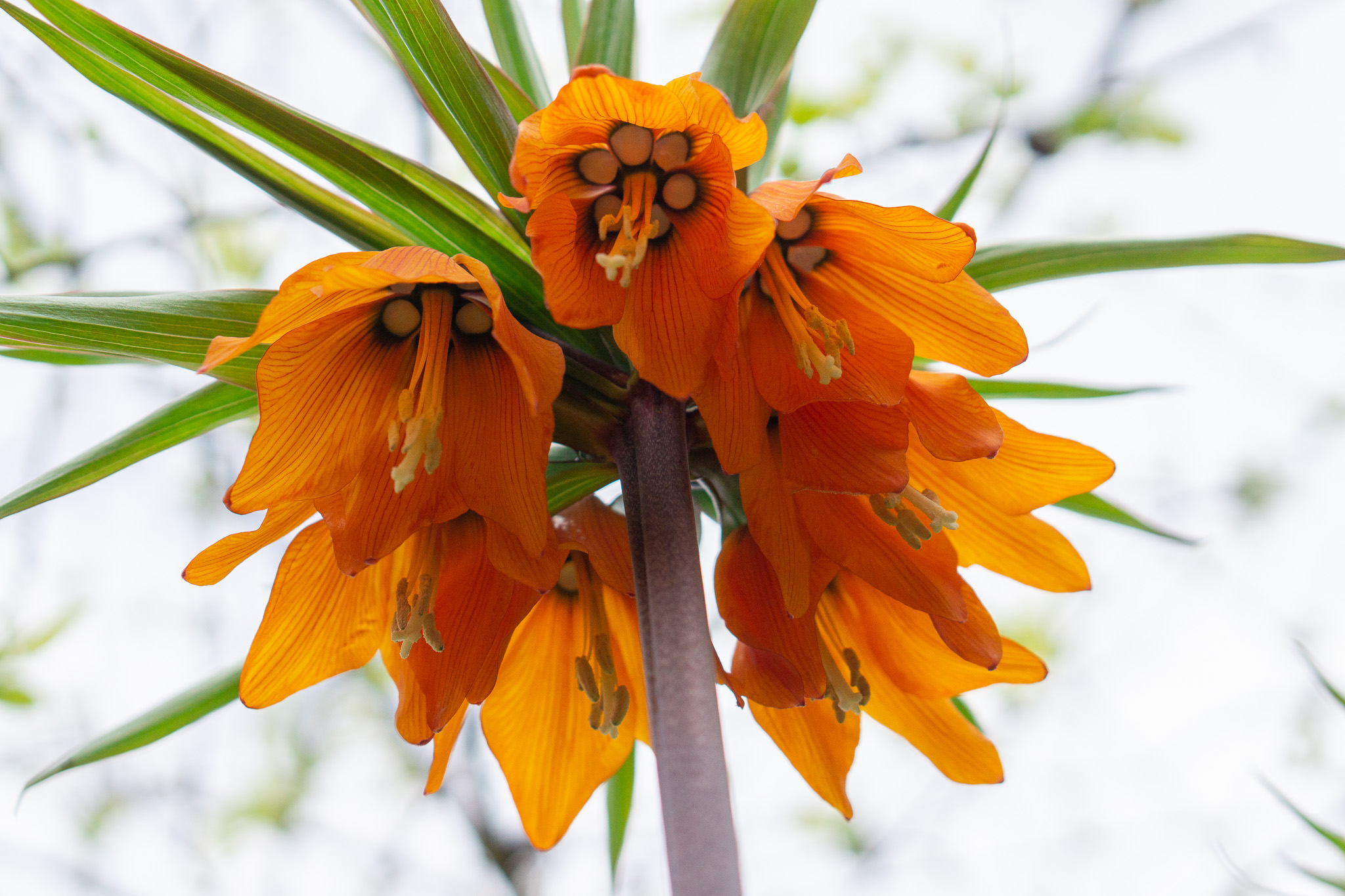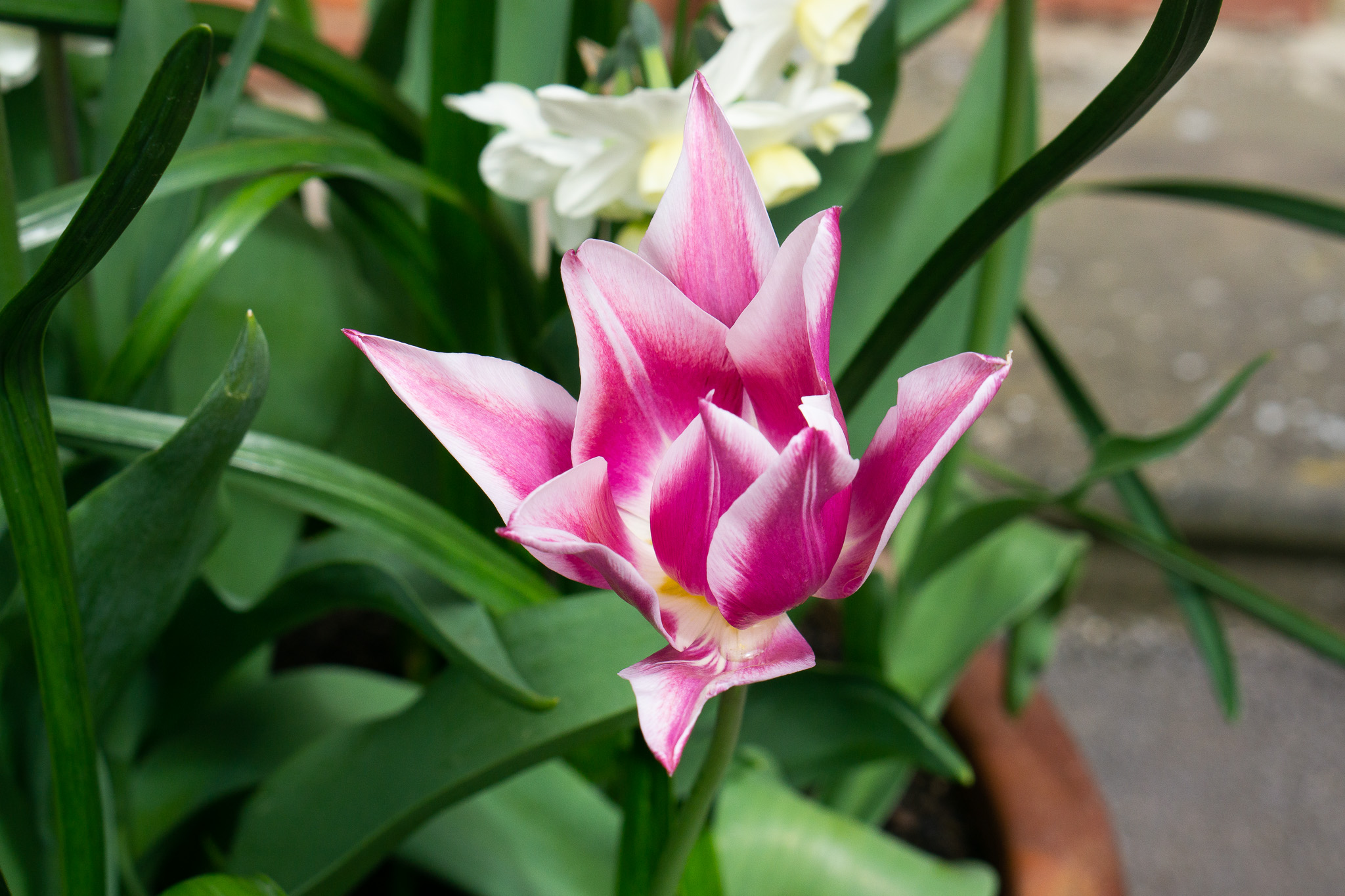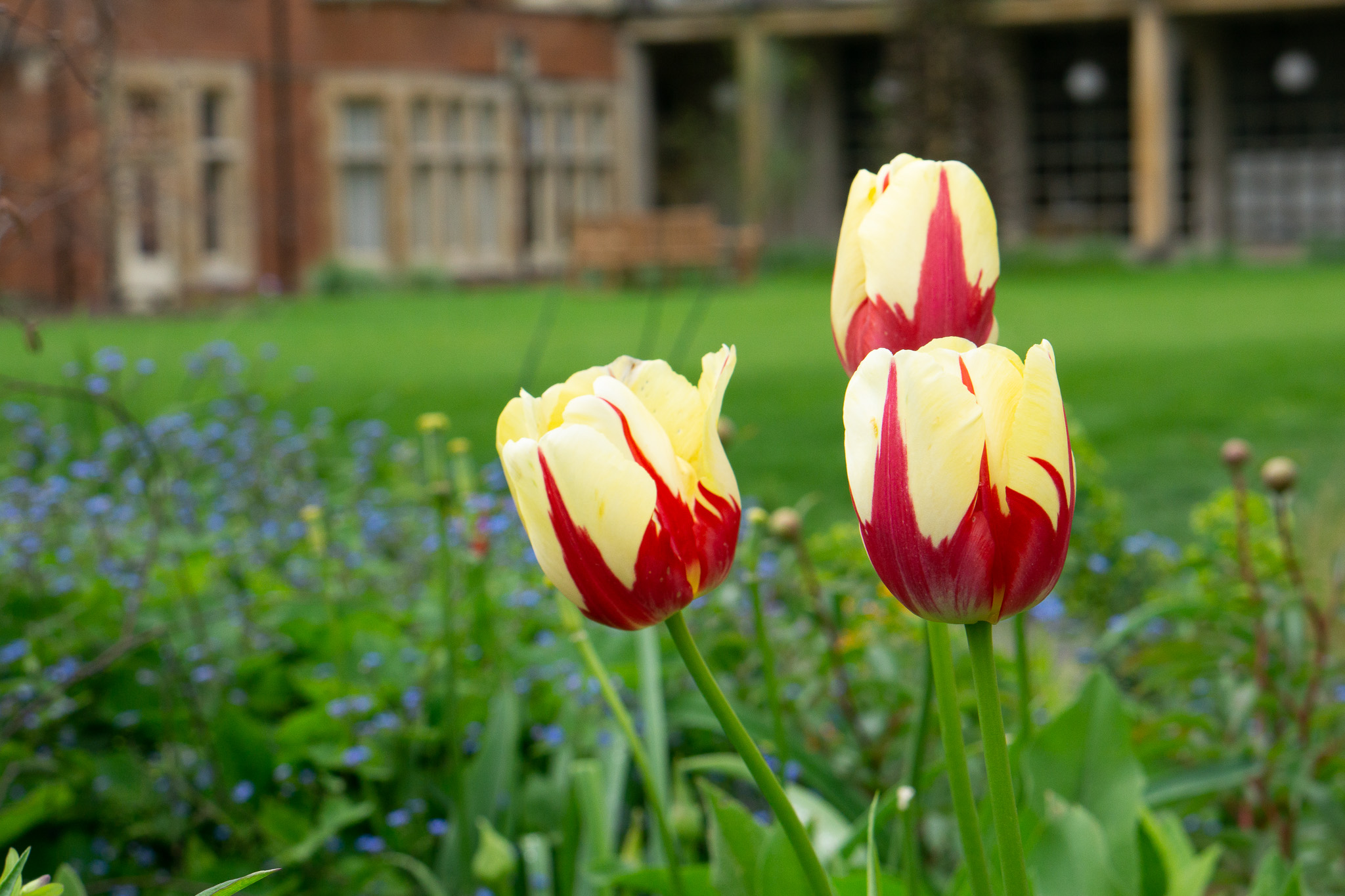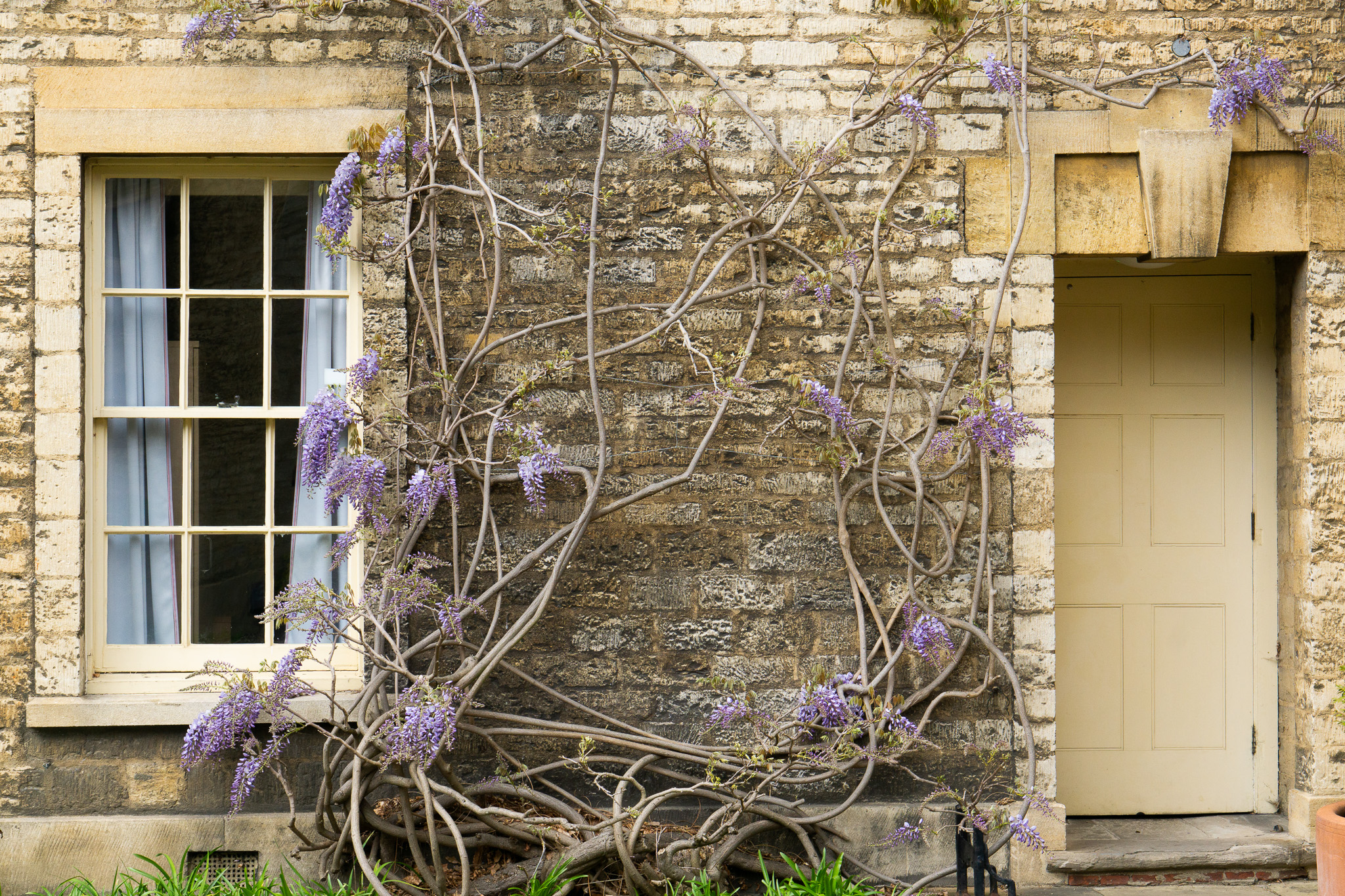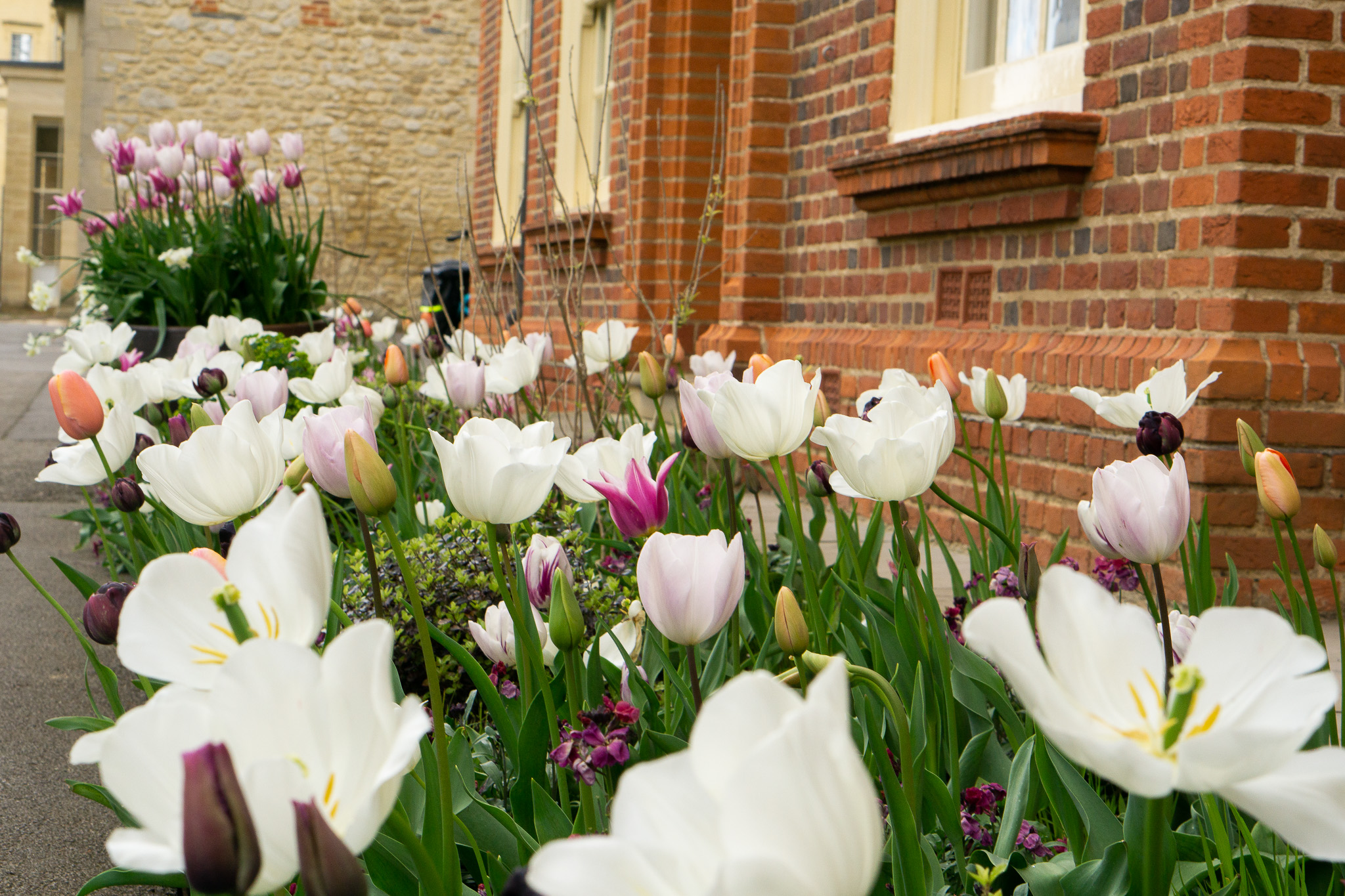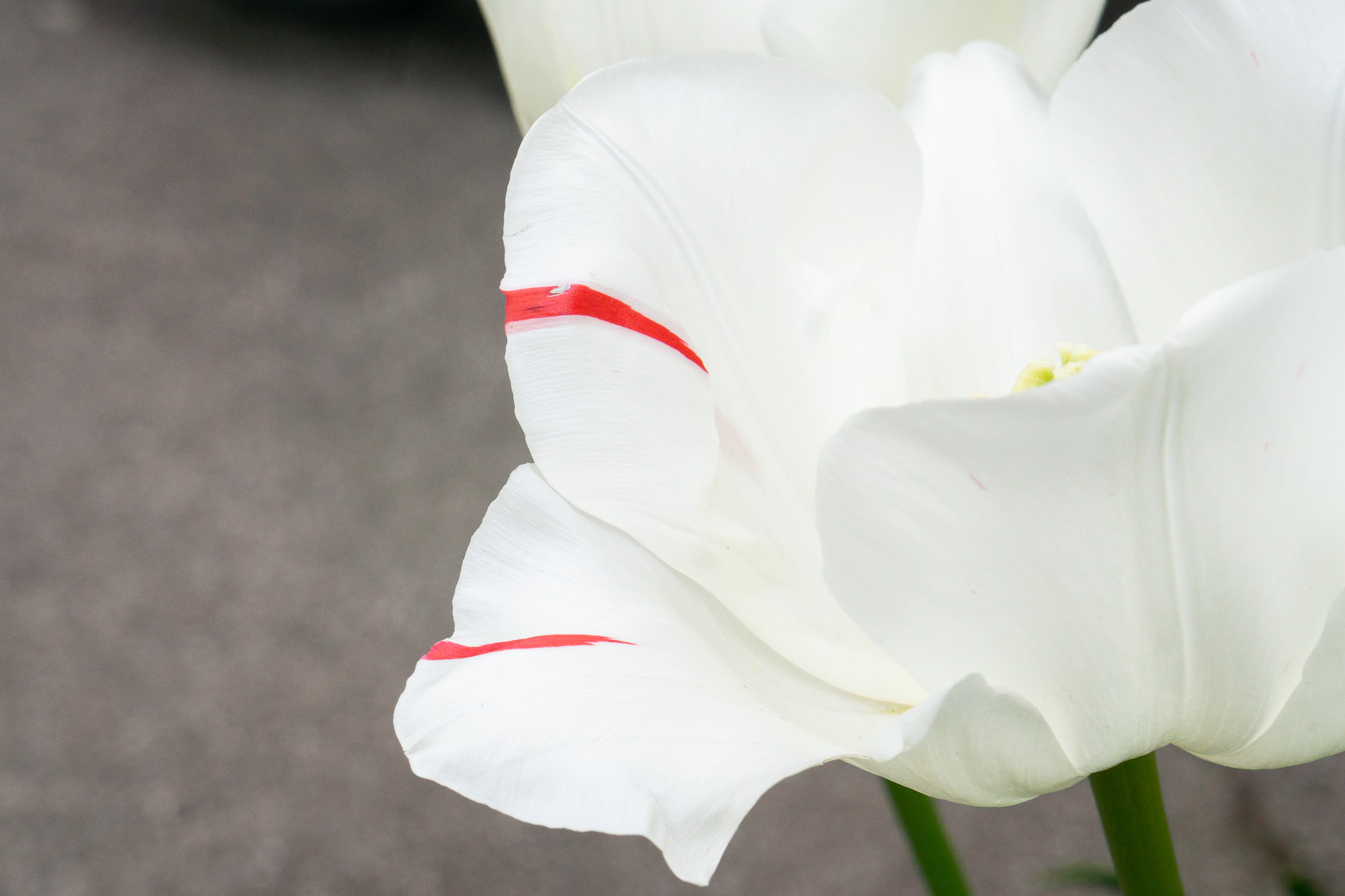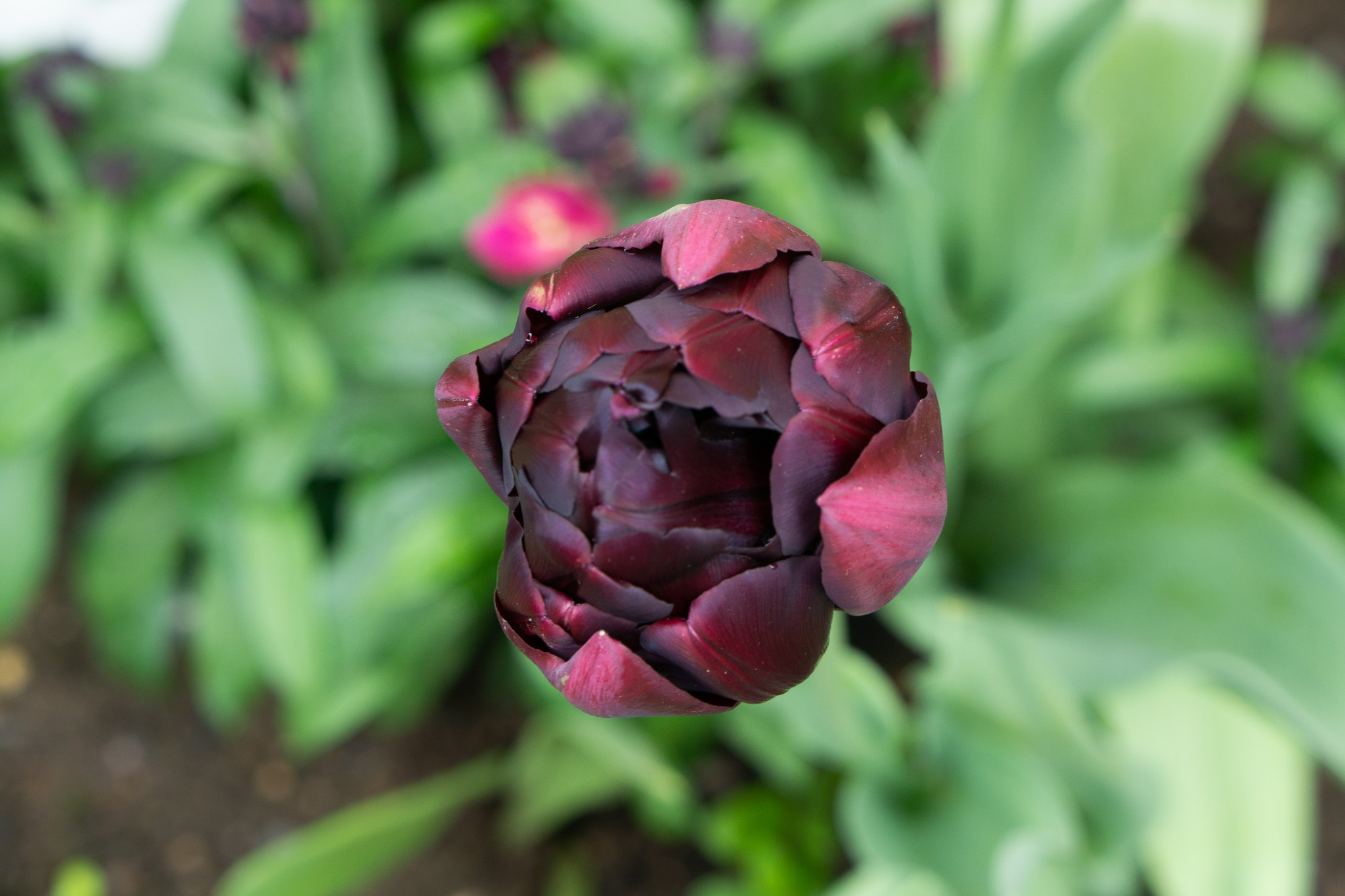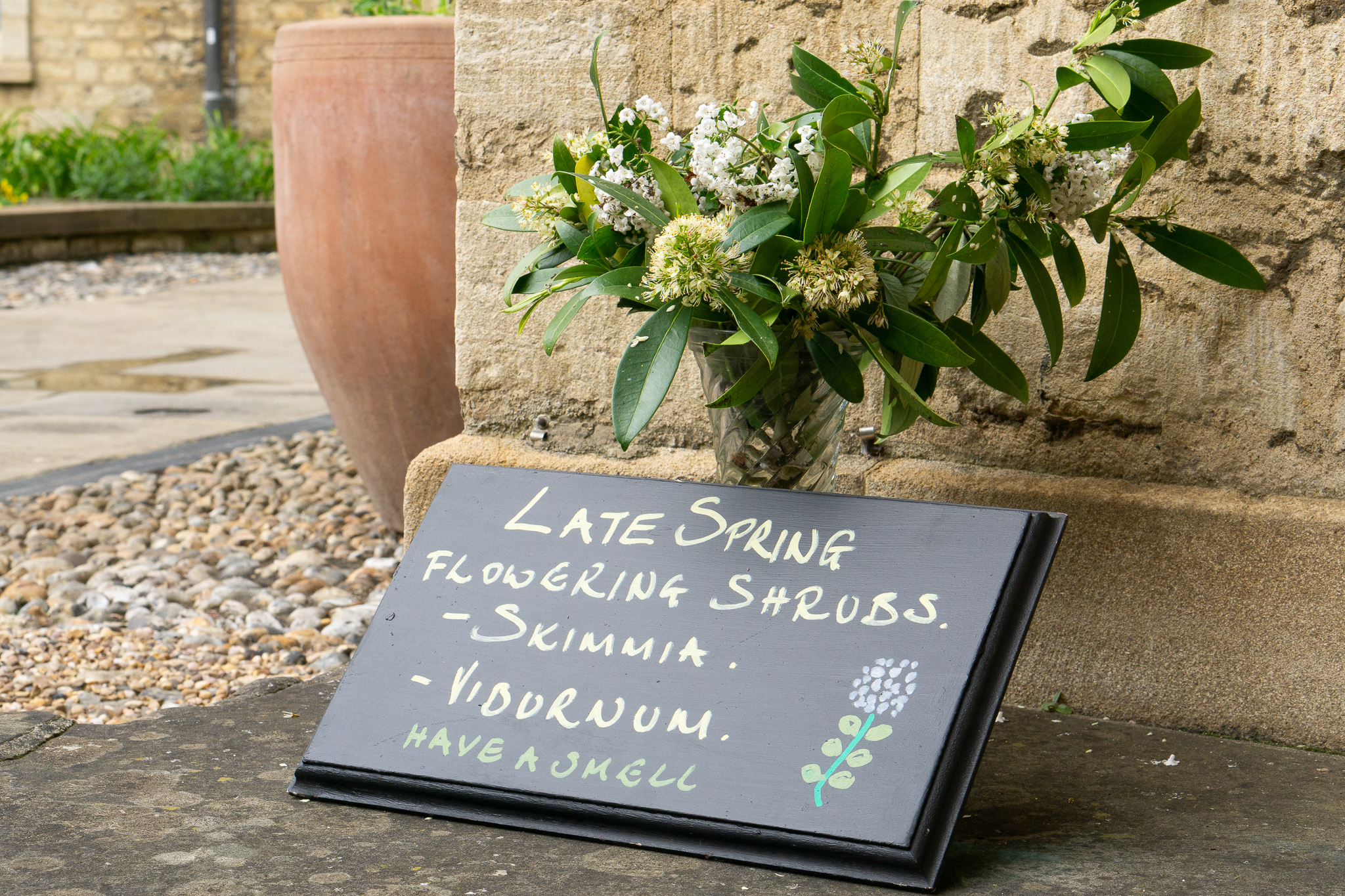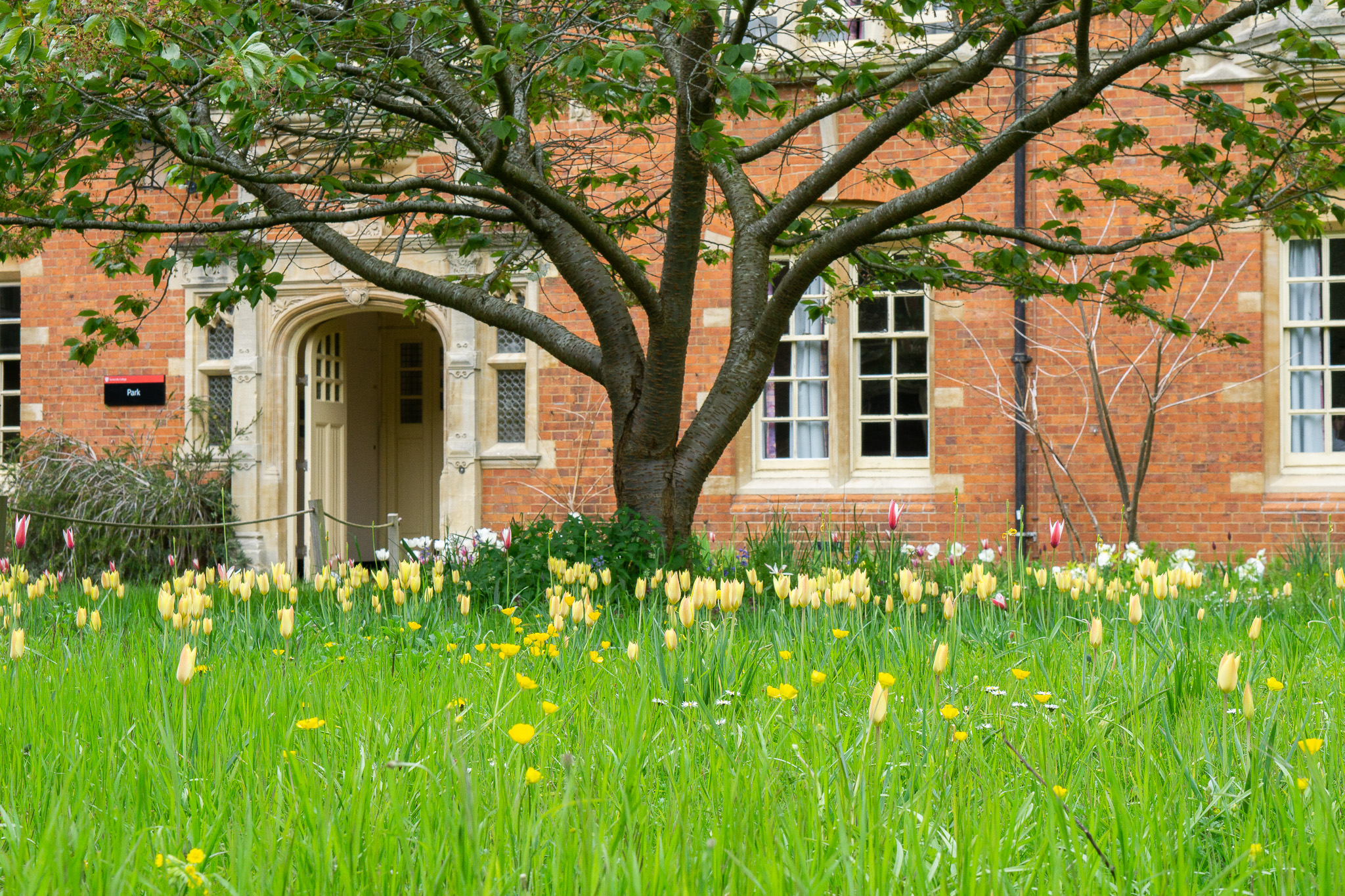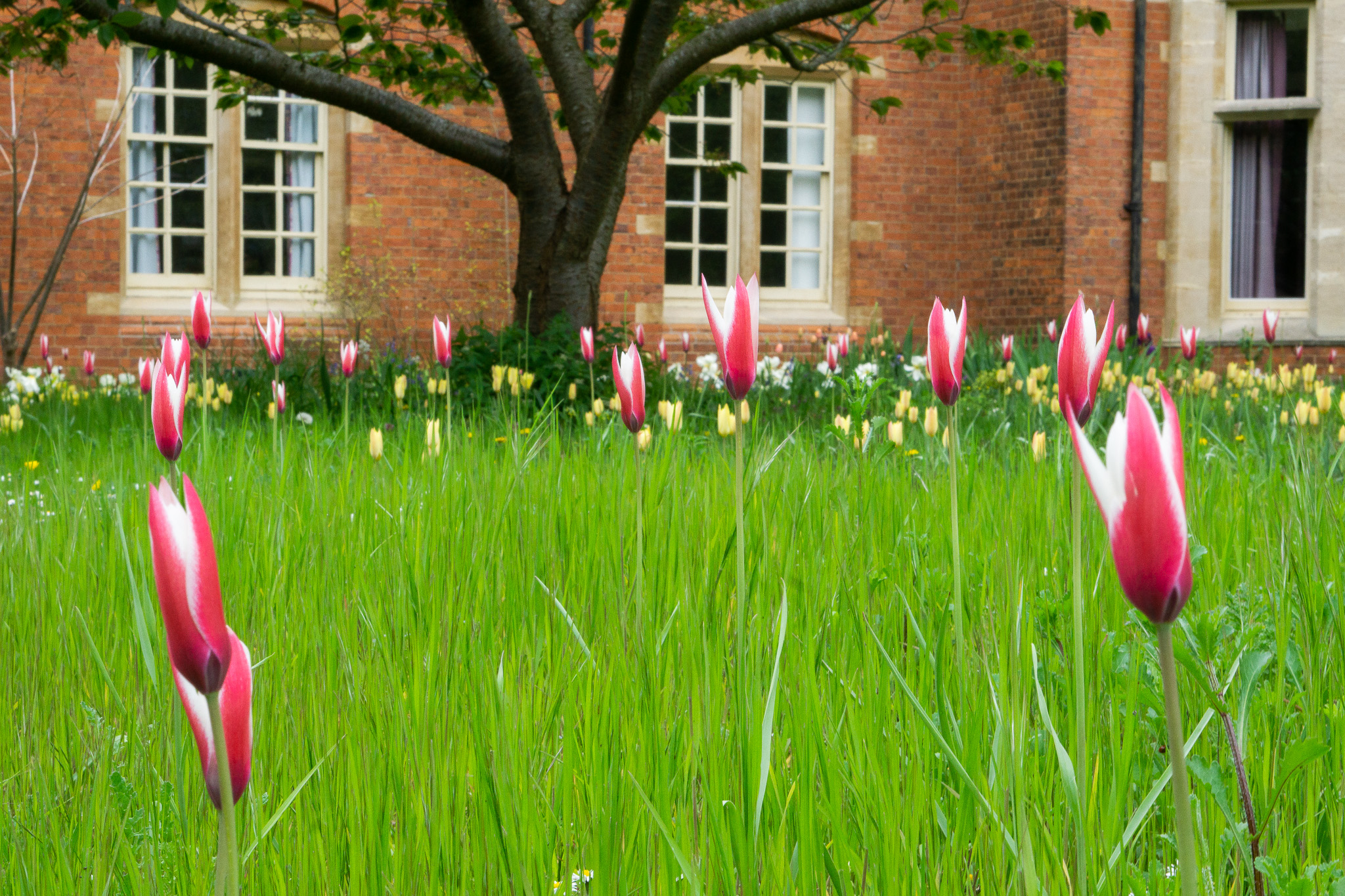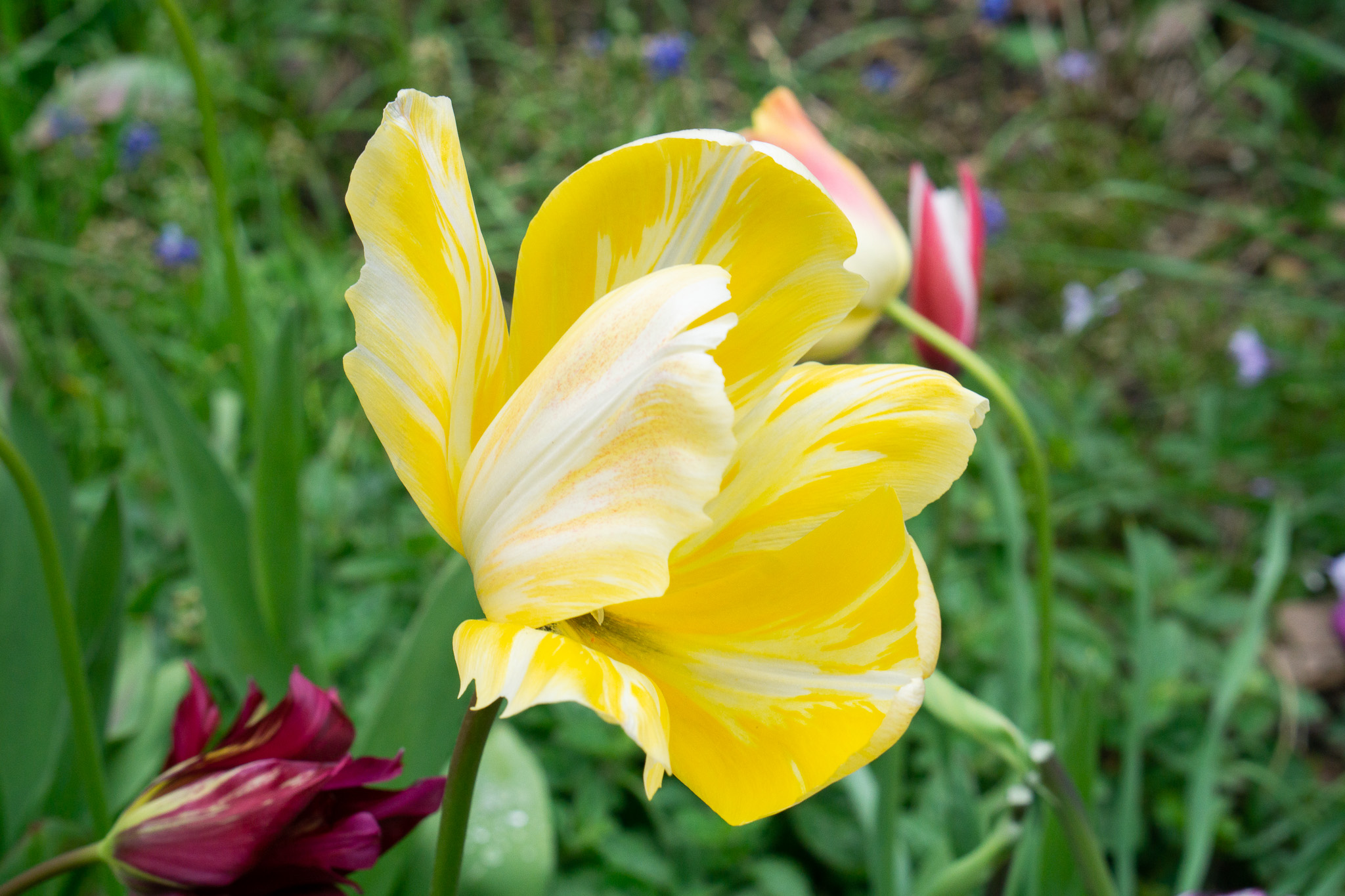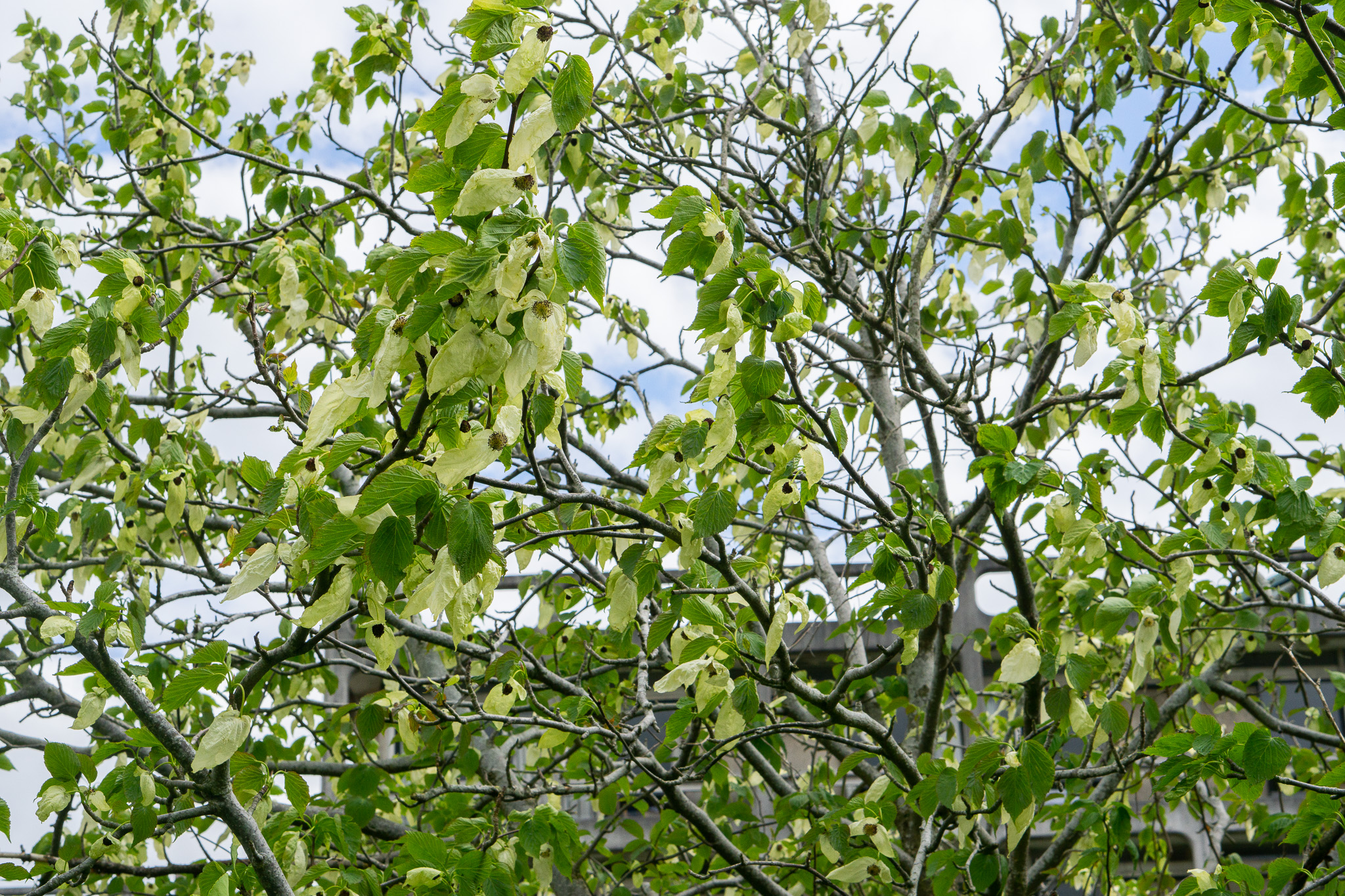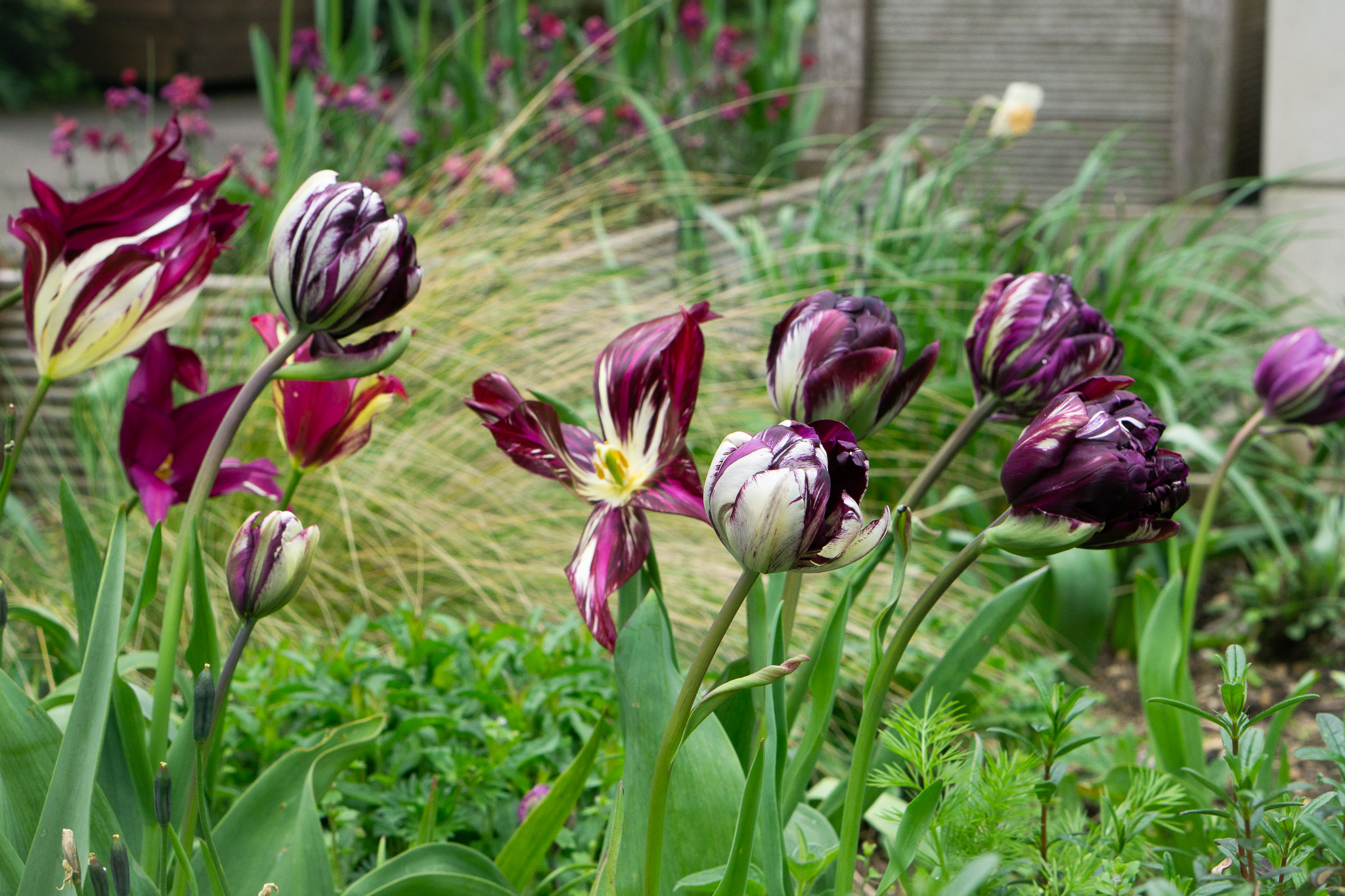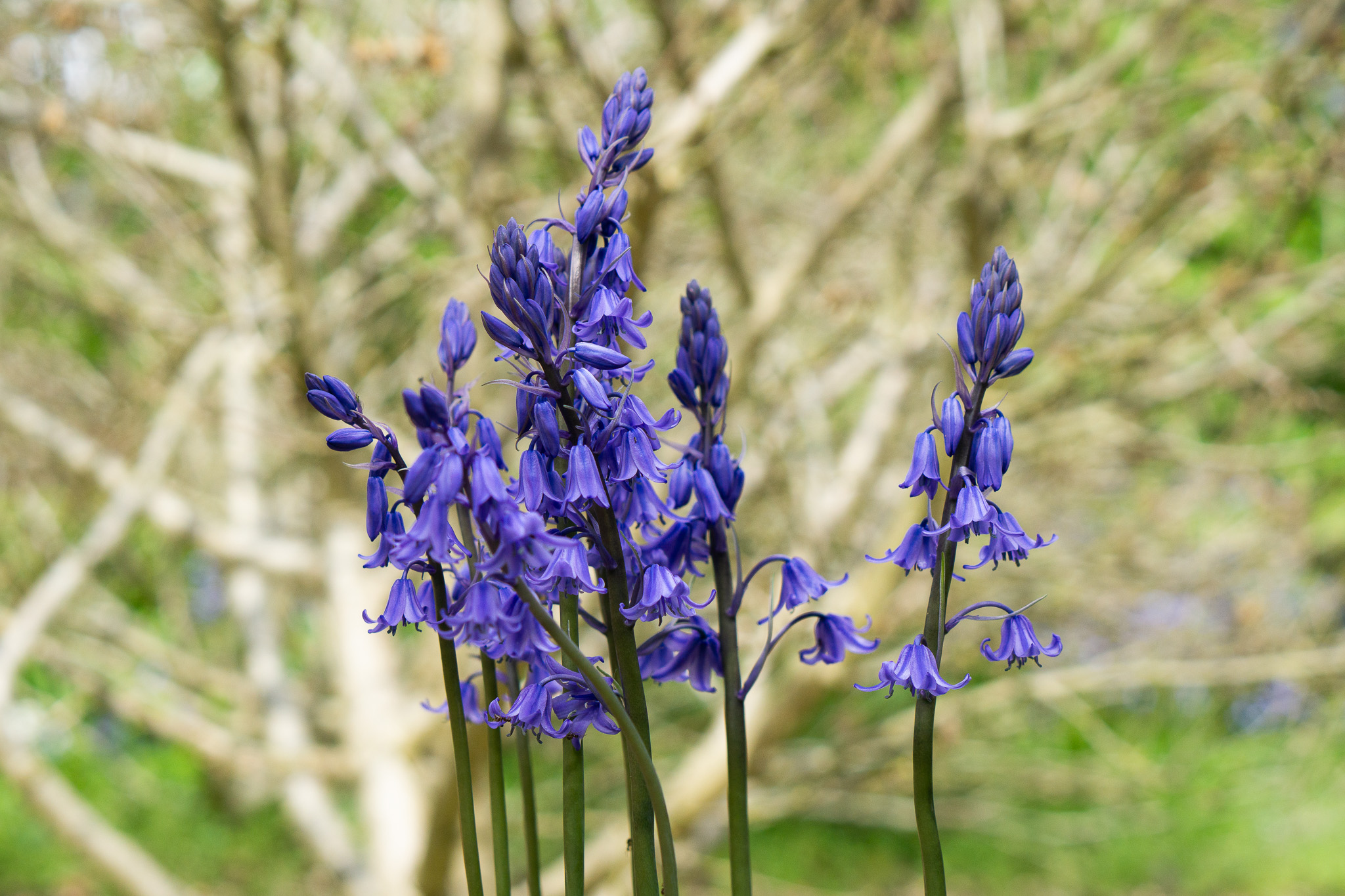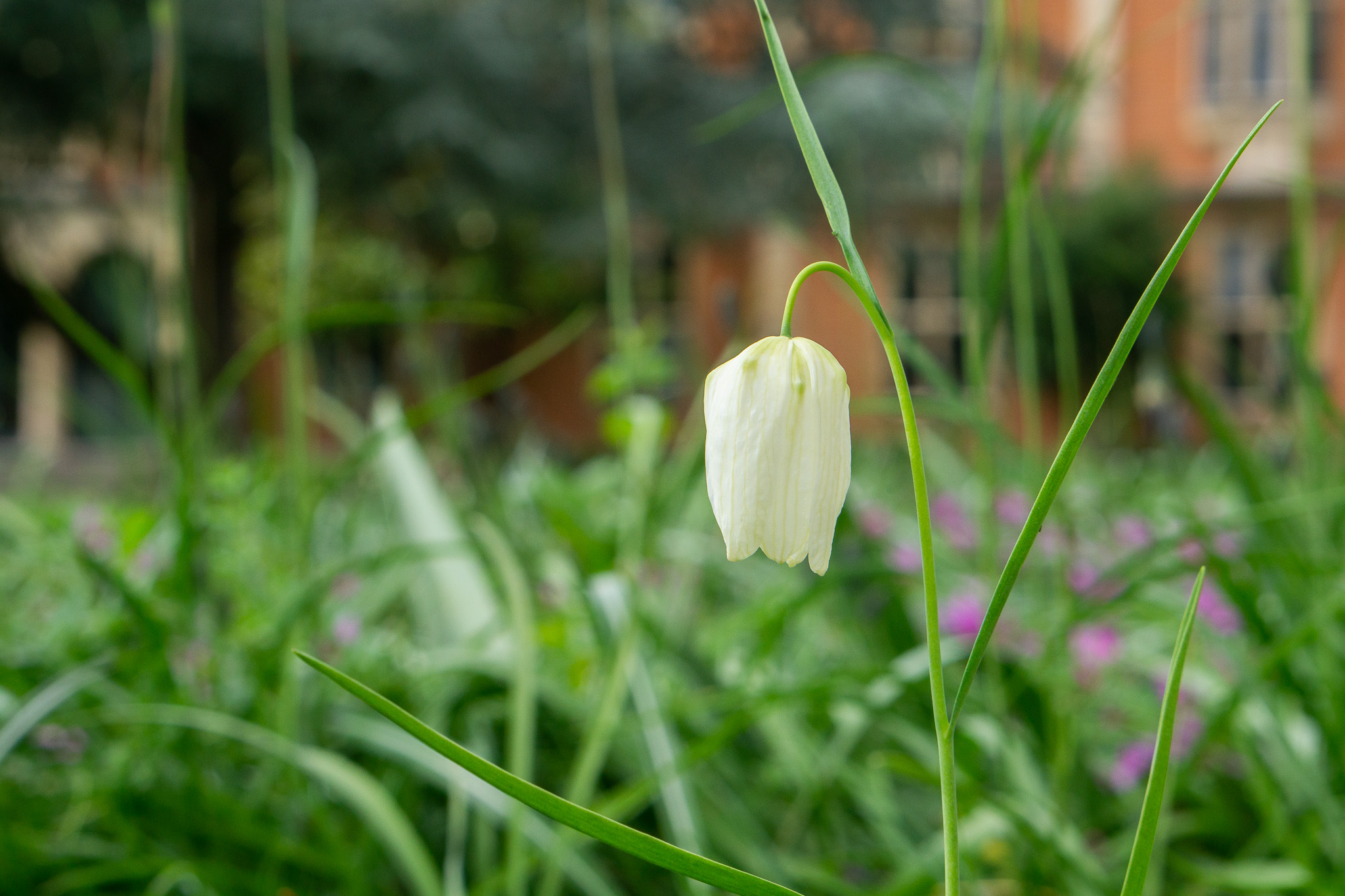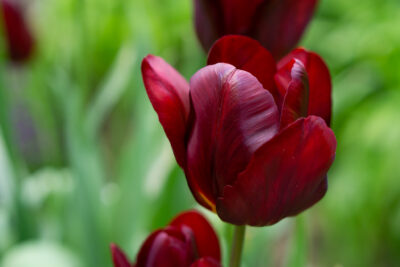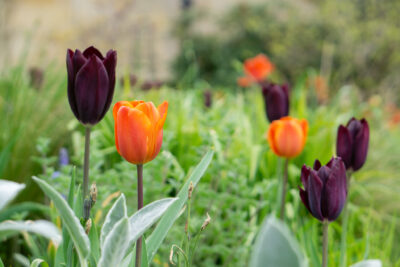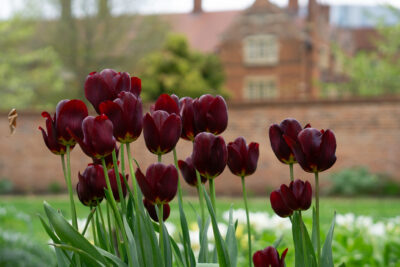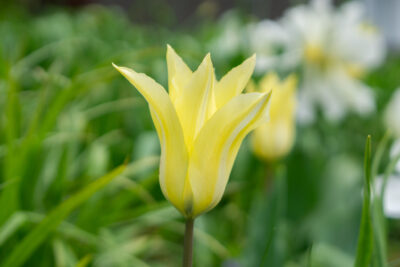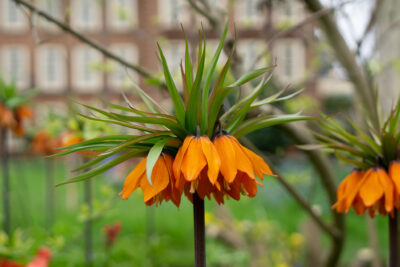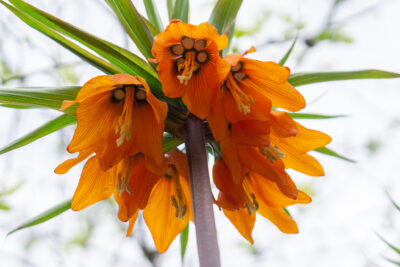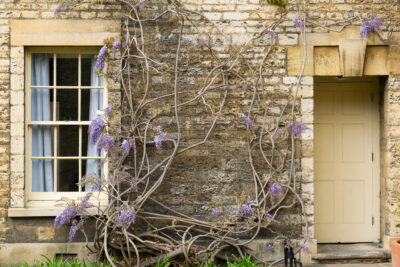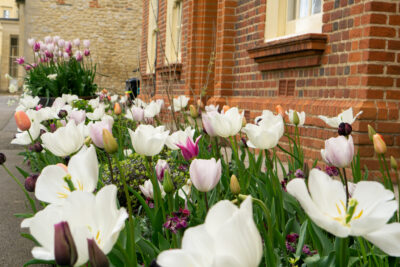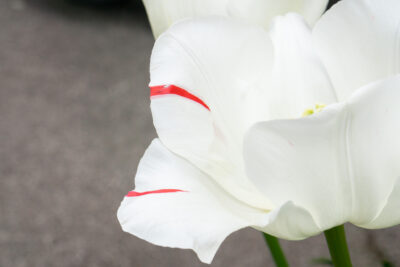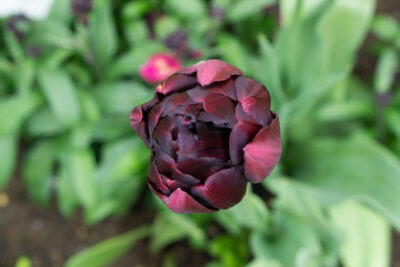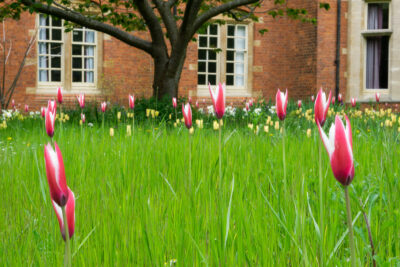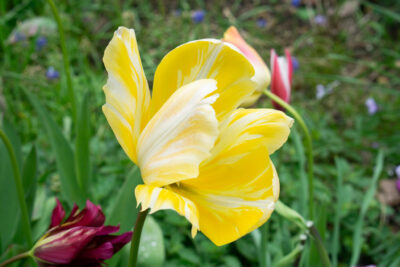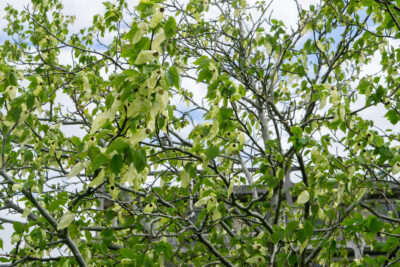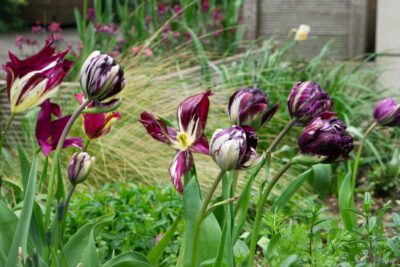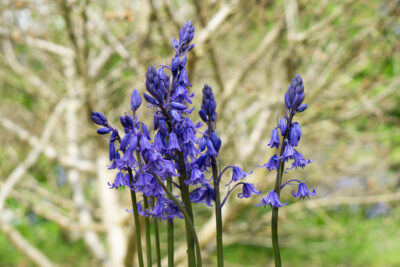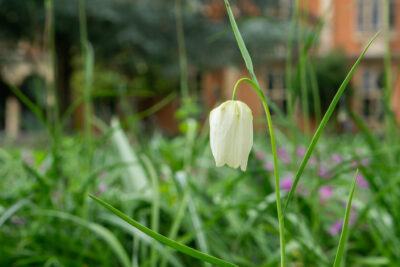Welcome to April and welcome to Trinity – which is, it has to be said, the loveliest of terms. The sun shines, there are blue skies and birds singing in them, and the beautiful tulips are out. Which brings us to the stars of today’s blog!
Tulips are one of this particular gardener’s favorite flowers (and, let’s be honest, everyone else’s as well). The flowers come from Iran (Persia), where they were first cultivated over 1000 years ago. Since then, they have spread far and wide – including to Europe, and that’s really where the story of the modern tulip begins. It’s time to make yourself comfortable and settle in for a little bit of a story (many thanks to our Fellow and Tutor Natalia Nowakowska for her help with this next section).
Let me take you back to Holland in the 1600s, then in the grip of the tulip bubble or ‘tulip mania’ (which you may have heard of). The tulip Viceroy has just been sold for a basket of goods worth 2500 florins, a sum over 8 times the average annual wage of 300 florins, making it the most expensive tulip ever.
But Viceroy harbours a terrible secret: it is beautiful – and broken.
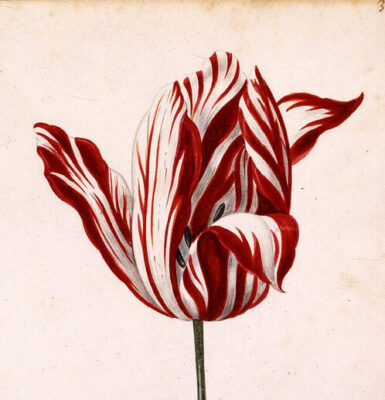
The infamous Tulip Viceroy
You see, the eye-catching stripes that made viceroy so desirable are in fact the symptoms of infection by the Tulip Breaking Virus. Unbeknownst to its sellers and buyers, Viceroy’s beauty was short lived – the new disease prevents infected tulips from flowering again, rendering them worthless.
This was a disaster. It affected not just the horticultural world, but the whole Dutch state. During this time, Holland had become the world’s top flower bulb producer, fulfilling orders for the wealthy and powerful around the world. The bottom fell out of the market, crashing the Dutch economy and presenting the first example of an economic bubble bursting.
(It is interesting to note, however, that the debate has been reopened in recent years about the accuracy of histories of the crash. Anne Goldgar, for example, doesn’t believe the crash was the widespread at all. If you’re interested, the Tulip Mania Wikipedia page explores the different views.)
That’s enough of a history lesson for one blog! What does all this have to do with Somerville in 2023?
Well… unfortunately, we are now facing the Tulip Breaking Virus here at Somerville. As much as we love the tulips in our borders, this year’s display is going to be the last for some time as we wait for the disease to clear from the soil. But don’t panic! There will still be tulips aplenty at Somerville, albeit potted away safely from any pathogens and displayed around the site. Until then, let’s enjoy this year’s flowering as much as we can (and you’ll find plenty of photos of just that in our monthly gallery below). See you in May!
Somerville’s gardeners are Alaistair Mallick (Head Gardener) and Anna Hart.

Guide to our Tulips
Many of you have asked which type of tulip is which around college, so we have attached the list of plantings done in 2022. Others we might be able to name for you if you grab us, but bear with us if we’re not sure – some may no longer be in production or we might just be at a loss as they were planted well before our time here.
Traffic Quad:
- Cash
- Devenish
SCR Border:
- Black Hero
- Bleu Amiable
- Menton
- Ballade
- Silver Cloud
Chapel and Croquet Borders:
- Ballerina
- Cairo
- Havran
- Ballerina
- Annie Schilder
Fellows’ Garden:
- Exotic Emperor
- Florijn Chic
- Silver Cloud
- Virichic
Wolfson Border:
- Peppermint Stick
- Turkestanica
- Havran
- Grand Perfection
